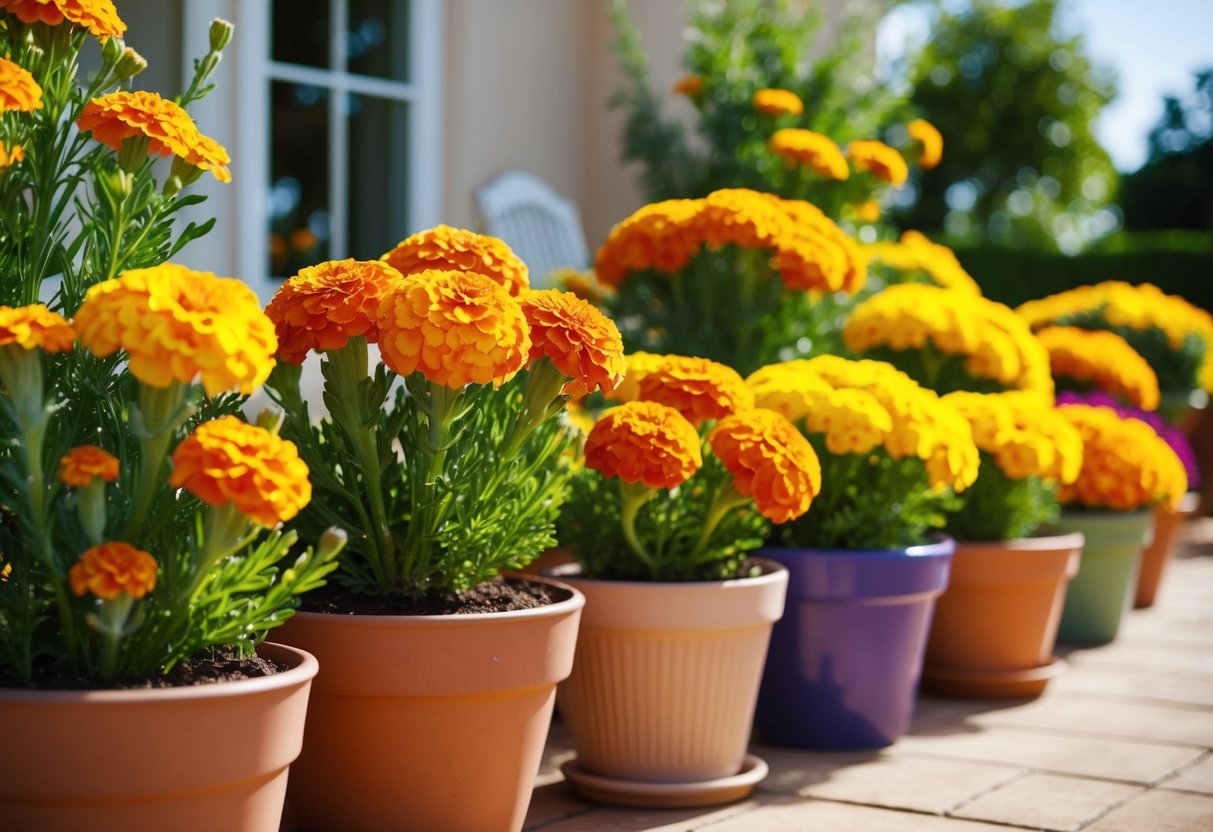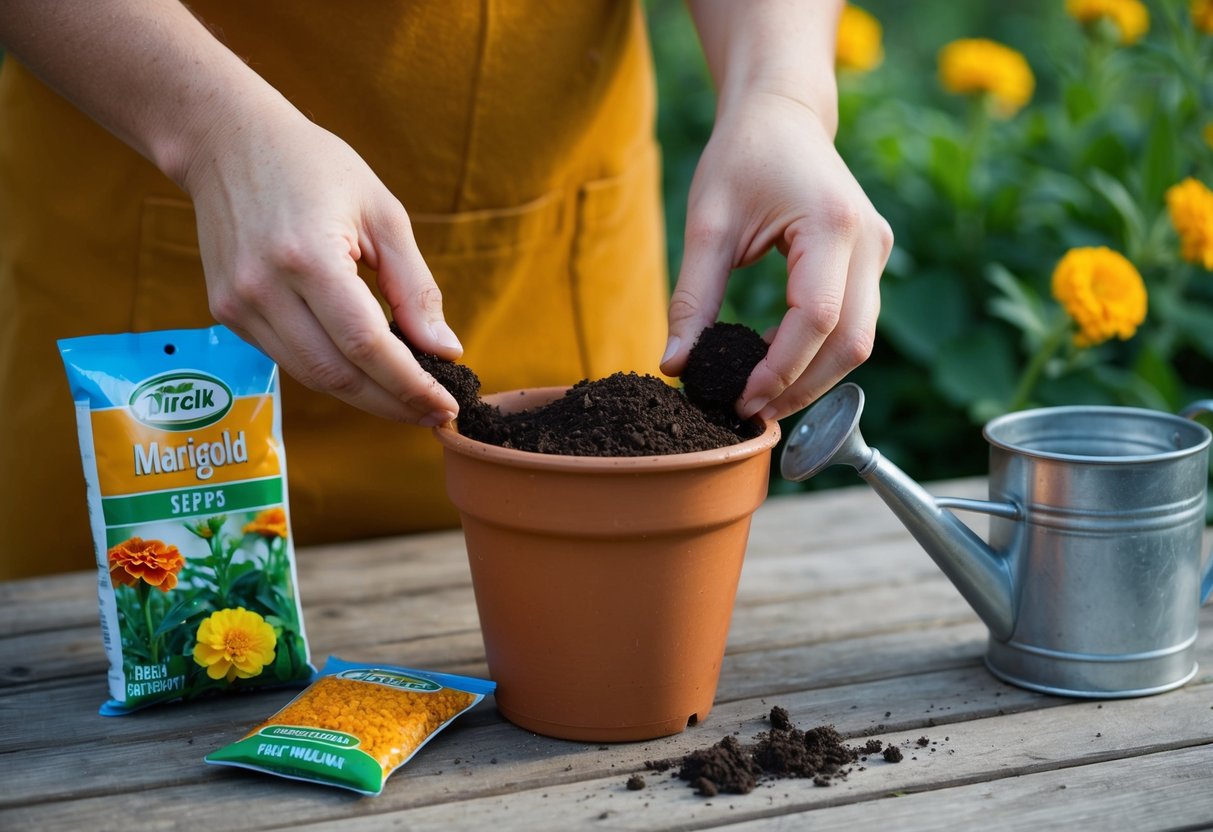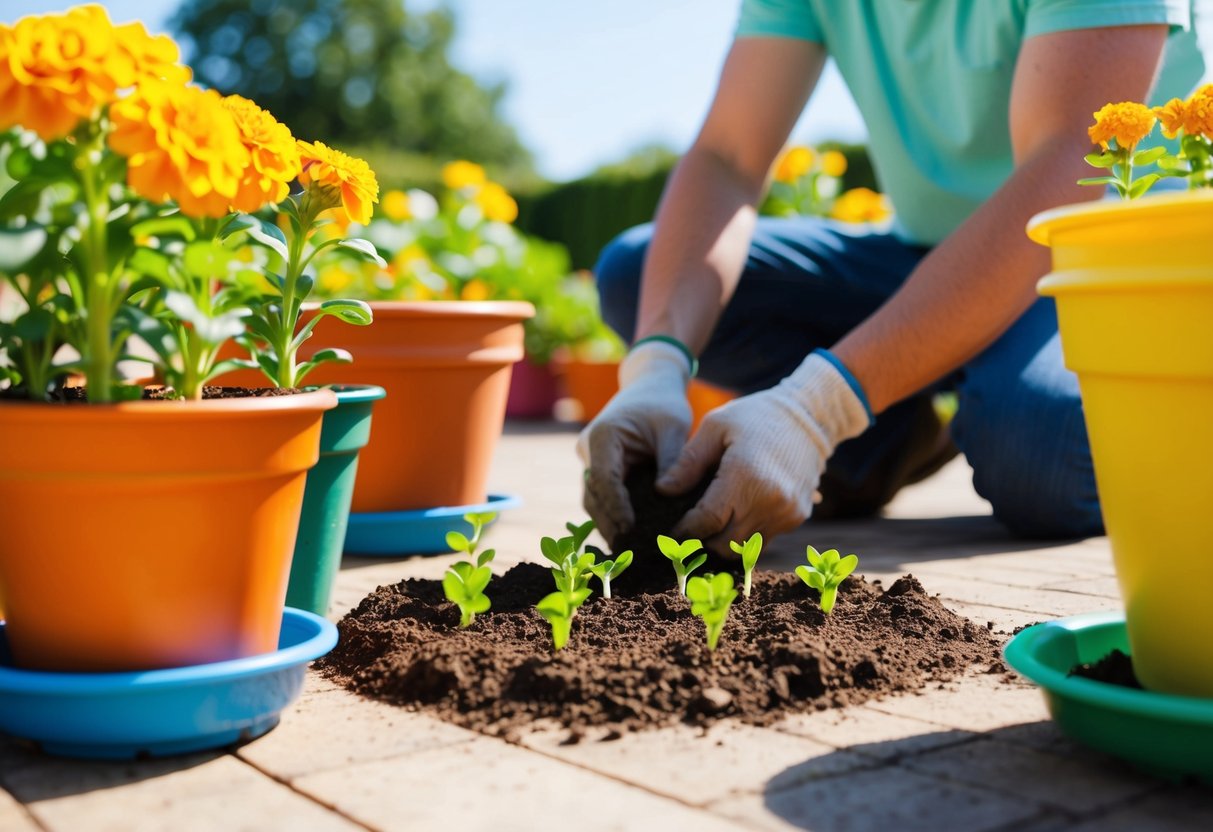Do Marigolds Do Well in Pots? Tips for Thriving Blooms
If you’re looking to add a splash of color to your garden without needing much space, marigolds might be your answer. Marigolds do exceptionally well in pots, making them ideal for container gardening. They thrive with plenty of sunlight and the right care, turning any corner into a cheerful spot with their bright blooms.

You can grow marigolds in pots of various sizes, even as small as six inches across for certain types like Dwarf French Marigolds. With a good quality, well-draining potting mix and regular watering, they will flourish. Consider placing your potted marigolds in a sunny location where they’ll receive at least six hours of direct sunlight each day.
This easy-to-care-for flower not only adds beauty but is also known for its ability to repel pests, making it a delightful and practical choice for your patio or balcony. These charming blooms can be a vibrant addition to your space while being low-maintenance and rewarding to grow.
Selecting the Right Marigold Varieties

When choosing marigolds for your pots, it’s important to know the different types available. Popular options include African, French, and Signet marigolds, each with unique characteristics. Understanding these can help you pick the best variety for your garden needs.
Highlights of African, French, and Signet Marigolds
African marigolds, also known as Tagetes erecta, are known for their large blooms and tall stature, reaching up to 36 inches. Varieties like Crackerjack and Vanilla offer vibrant colors and a striking presence in your garden.
French marigolds, or Tagetes patula, are smaller and bushier. These are perfect for pots. The Naughty Marietta variety features bold yellow and maroon flowers. These marigolds are easy to care for and have a long blooming season.
Signet marigolds stand out with their delicate, edible leaves and citrus-scented flowers. Lemon Gem is a popular choice, providing a splash of color and adding a culinary touch to your garden. The small, bright blooms are perfect for smaller pots and tight spaces.
Potential Benefits of Growing Marigolds
Marigolds are known for their ability to deter pests such as nematodes and some insects, making them great companions for vegetables. They are low-maintenance and can thrive in a range of conditions.
These flowers are also drought-tolerant, which is a significant advantage for potted plants in sunny positions. Additionally, marigolds attract beneficial insects like ladybugs and butterflies, enhancing your garden’s ecosystem.
Whether you choose African, French, or Signet varieties, marigolds offer vibrant blooms with practical benefits, making them a favorite among gardeners.
Understanding Marigolds Taxonomy: Tagetes Genus
Marigolds belong to the Tagetes genus, which includes several species with varied appearances and uses. African marigolds and French marigolds are the most commonly grown, both appreciated for their beauty and resilience.
The Tagetes genus is distinct from the pot marigold, also known as calendula. Unlike true marigolds, calendula is used more in herbal remedies and cooking.
Choosing the right marigold involves understanding these differences and selecting the best variety for your specific needs and available space.
Preparing for Planting

To grow marigolds successfully in pots, you need to focus on selecting the right container, ensuring proper drainage, and choosing a suitable soil mix. These steps help your plants thrive and bloom beautifully.
Choosing the Right Container
Starting with the right container is important for planting marigolds. Marigolds do well in various container sizes, but you’ll want a pot that gives them enough room to grow. A pot that is at least 12 inches wide is often ideal.
The container should be made from durable materials like clay, plastic, or ceramic, which help keep the plant stable. A larger pot not only provides ample space for roots but also helps prevent the soil from drying out too quickly.
The Importance of Proper Drainage
Drainage is crucial when growing marigolds in containers. You’ll need a pot with drainage holes at the bottom to prevent water from pooling and causing root rot. If your pot doesn’t have these holes, you can carefully drill some yourself.
Adding materials like sand, perlite, or vermiculite to the potting mix helps further improve drainage. These materials make sure excess water flows out easily, maintaining the right moisture levels for your plants.
Selecting the Best Soil Mix
Marigolds need a well-draining soil mix to grow healthily. A high-quality, lightweight potting soil is best. Avoid garden soil, which can compact and suffocate the roots.
Look for potting soils with added perlite or vermiculite for better drainage. You might also add a bit of compost for extra nutrients. This combination ensures your marigolds have the nutrients and conditions they need to thrive in a container setup.
Planting and Germinating Marigolds

Marigolds are easy to grow and thrive in various conditions. Growing them from seeds requires attention to soil conditions and proper spacing. Successful germination involves keeping the soil moist but not waterlogged and ensuring the right amount of sunlight.
Sowing Marigold Seeds Effectively
Start by getting marigold seeds from a reliable place. Wait until the last frost has passed before planting. Choose soil that is neutral to slightly acidic, with a pH between 6.0 and 7.0. Sow the seeds about an inch apart and cover them lightly with soil. This provides enough room for each seed to grow.
Water the soil gently to keep it moist but avoid making it too wet. Overwatering can prevent seeds from germinating properly. You should see sprouts within a week to two weeks. Make sure the area gets at least six hours of sunlight a day. Sunlight is crucial for helping the seeds germinate and grow into strong plants.
Transplanting and Propagation Techniques
After the seedlings have grown a few inches tall and the danger of frost has passed, it’s time to transplant them. Carefully move the seedlings to their permanent pots or flower beds. Make sure their roots are not damaged during this process. A good tip is to use pots with drainage holes to prevent waterlogged soil.
For propagating marigolds, you can also take cuttings. Snip a healthy stem from an existing plant. Then, plant it in moist soil. Keep this in a sunny spot and water it regularly. This method allows you to grow more marigolds without starting from seeds. Regular watering and sunlight will help the new plants grow well.
Caring for Marigolds in Pots

Keeping potted marigolds healthy involves regular watering, the right fertilizing practices, and addressing potential diseases. Proper care ensures that your marigolds thrive and offer a burst of color throughout the growing season.
Watering Routines and Requirements
Marigolds need consistent watering, but they don’t like overly wet conditions. Check the soil by touching the top 1-2 inches. If it’s dry, it’s time to water deeply. Ensure the pot has good drainage to prevent root rot, which can occur if water accumulates at the bottom. Watering only when needed helps maintain the right moisture level.
During hot or dry periods, you might need to water more often. Early morning or late afternoon is best to minimize evaporation. Keep an eye on your marigolds and make adjustments as needed to keep them looking their best.
Fertilizing for Vibrant Growth
For vibrant flowers, feed your marigolds with a balanced fertilizer every four to six weeks. Look for fertilizer labeled 10-10-10, representing equal parts nitrogen, phosphorus, and potassium. Dissolve it in water and apply according to package directions for best results.
You can also use slow-release granules mixed into the soil. Be cautious not to over-fertilize, as this can lead to excessive foliage with fewer blooms. Regular feeding helps maintain healthy growth and color in your potted marigolds.
Preventing and Mitigating Diseases
Marigolds are hardy but can be affected by diseases like powdery mildew and root rot if not properly cared for. Ensure adequate air circulation around the plants by not crowding them in the pot. This helps prevent fungal issues.
Remove any dead or diseased leaves regularly as part of your routine maintenance. If you notice signs of mildew, consider using a mild fungicide or homemade remedy, such as a mixture of water and baking soda. This can help keep infections at bay and ensure your marigolds stay healthy and beautiful all season long.
Additional Tips for Successful Growth

Marigolds thrive in pots with the right conditions. They need plenty of sunlight, work well with certain plants, and have specific growth cycles.
The Role of Sunlight and Shade
Marigolds love full sun. They need at least six hours of sun exposure daily to bloom well. Place your pots in a sunny spot to ensure they get enough light.
A lack of sun might lead to fewer flowers. Some shade is okay, but avoid too much. Your marigolds will show signs if they’re not happy, such as fewer blooms. Remember, marigolds are drought-tolerant and can handle some dryness.
Companion Planting in Containers
Marigolds grow well with many companion plants. Pairing them with zinnias or herbs can be a great choice. Marigolds naturally deter pests, so they help protect other plants.
This makes them perfect for container gardening. Consider annual plants when planning your container garden. Their vibrant color and pest-repelling abilities are great benefits.
Understanding Seasonal Growth Cycles
Marigolds are annuals, meaning they complete their growth cycle in one season. Understanding this cycle helps plan your garden. They thrive in hardiness zones where they get enough warmth.
Watch for signs they might self-seed. This means they can grow back the next year without replanting. They adapt well to different seasons, making them a flexible choice for your garden.







